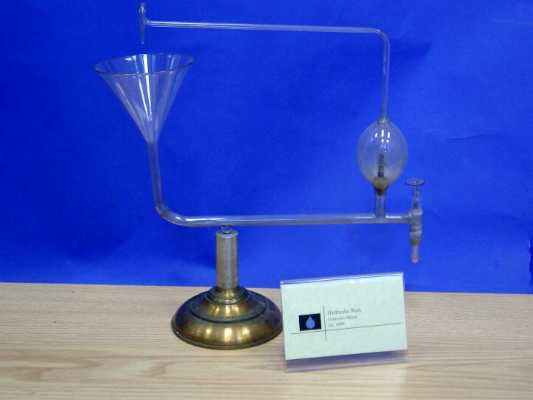Hydraulic Ram
From the 1929 Central Scientific Company Catalogue: "Hydraulic Ram.
To show how the inertia of a falling body of way may be used to raise a
small portion of this water to a point higher than its source. A perfect
working model of glass about 35 cm high, with valve and air chamber complete
... $4.50.."
 The funnel is placed under a water faucet and water is allowed
to flow down and to the right. This water shuts the valve on the exhaust
pipe on the lower right corner. The water pressure then opens the valve
in the bottom of the globe, which admits a certain amount of water. The
lower valve then opens, and the process repeats itself. Eventually, enough
pressure is built up in the globe to drive the water up and to the left,
where it spills into the funnel.
The funnel is placed under a water faucet and water is allowed
to flow down and to the right. This water shuts the valve on the exhaust
pipe on the lower right corner. The water pressure then opens the valve
in the bottom of the globe, which admits a certain amount of water. The
lower valve then opens, and the process repeats itself. Eventually, enough
pressure is built up in the globe to drive the water up and to the left,
where it spills into the funnel.
The device was invented by Joseph Montgolfier (1749-1810),
better known for his work with hot-air balloons. This example is at the
University of Cincinnati.The photograph is by Dexter Clark of the Cincinnati
Physics Department.
Return to Fluids Home Page | Return
to Home Page